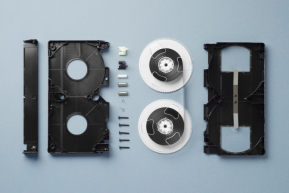Many of our clients, particularly those who created their video tapes outside the United States, come to us with PAL encoded tapes to convert to DVD. Having home PAL encoded video on VHS tapes means that it’s not easy to watch them in the United States. Hopefully these fun facts will further educate you on these tapes and some of the differences between two of the most common encoding systems:
- These tapes are visually indistinguishable from their NTSC counterparts in size and shape. However, In many cases, the encoding system is transcribed into the plastic cassette, which makes it easier to tell the difference.
- PAL, which stands for “Phase Alternating Line” was developed in Hannover, Germany and patented in 1962.
- VCRs in the United States were built to be compatible with NTSC formats. While PAL tapes can sometimes play on VCRs, the image will be distorted, especially the color, which can disappear entirely.
- The PAL encoding system was designed to make up for some weaknesses in the NTSC system, particularly with the color. As a result, PAL tapes are by default 20% higher resolution than NTSC encoded tapes, with 576 visible lines to 480.
- Many countries in Africa, Europe, Asia and South America used PAL encoding for their videotapes. If you know or suspect that your videotapes were created in these regions, it’s likely they will have been encoded as such.
- When we transfer PAL video to DVD, we create DVDs that are compatible in the United States or abroad, so there are no more worries about not being able to watch your cherished family memories. The same goes with our USBs and digital downloads.
If you have a stack of PAL videotapes lying around your garage or attic, get in touch with us to figure out the best way to convert them over to DVD or digital. Call us at 617-505-1132 or email us at [email protected] to get started on your project or ask us any questions you have about the benefits of digitizing your video tapes.

